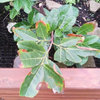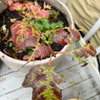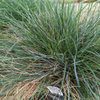Weird disease problem
ifraser25
10 years ago
Related Stories

GARDENING GUIDESTree Care: Common Tree Diseases and What to Do About Them
Learn to recognize trees that may be affected by diseases or pests so you can quickly take action
Full Story
REMODELING GUIDESThe Hidden Problems in Old Houses
Before snatching up an old home, get to know what you’re in for by understanding the potential horrors that lurk below the surface
Full Story
LANDSCAPE DESIGNProblem Solving With the Pros: Rustic Simplicity in a Country Garden
Editing thoughtfully and adding some magic result in a timeless weekend retreat
Full Story
CHRISTMAS10 Quick Solutions for Last-Minute Holiday Problems
Sail right by potential decorating, hosting and gift-giving pitfalls with these invaluable nick-of-time tricks
Full Story
BASEMENTSBasement of the Week: High-End Problem Solving for a Show House
Dark and dated? Naturally. But this '70s-style basement had myriad other design issues too. See how the designer rose to the challenge
Full Story
EVENTSOn Show: Weird, Wondrous Science Meets Design
Houses grown, not built. Power-generating soil. And snail poop that ... well, see for yourself in our coverage of a new Rotterdam exhibit
Full Story
GARDENING GUIDESGreat Design Plant: Rosa Banksiae a Low-Maintenance Beauty
This thornless, disease- and insect-resistant rose brings showers of white or yellow flowers to the spring garden
Full Story
HOUZZ TOURSMy Houzz: Vintage Treasures Adorn a Faded Beauty
A designer brings a bold vision and love of the weird and wonderful to a 110-year-old Australian house
Full Story
INSIDE HOUZZThere’s a Party in the Backyard, Says a Houzz Landscaping Survey
Entertaining, growing edibles and solving problems are goals for homeowners planning to revamp their yards
Full Story
DECORATING GUIDESHow to Work With Awkward Windows
Use smart furniture placement and window coverings to balance that problem pane, and no one will be the wiser
Full Story









jean001a
ifraser25Original Author
Related Professionals
Eden Prairie Landscape Architects & Landscape Designers · Towson Landscape Architects & Landscape Designers · Newcastle Landscape Architects & Landscape Designers · Jackson Landscape Contractors · Mooresville Landscape Contractors · Williamsburg Landscape Contractors · Camp Verde Landscape Contractors · Fort Myers Landscape Contractors · Lady Lake Landscape Contractors · Lancaster Landscape Contractors · Milford Landscape Contractors · New Providence Landscape Contractors · Soddy Daisy Landscape Contractors · Stallings Landscape Contractors · Kingsburg Landscape Contractorseibren
tsugajunkie z5 SE WI ♱
jean001a
ifraser25Original Author
jean001a
ifraser25Original Author
ifraser25Original Author
ifraser25Original Author